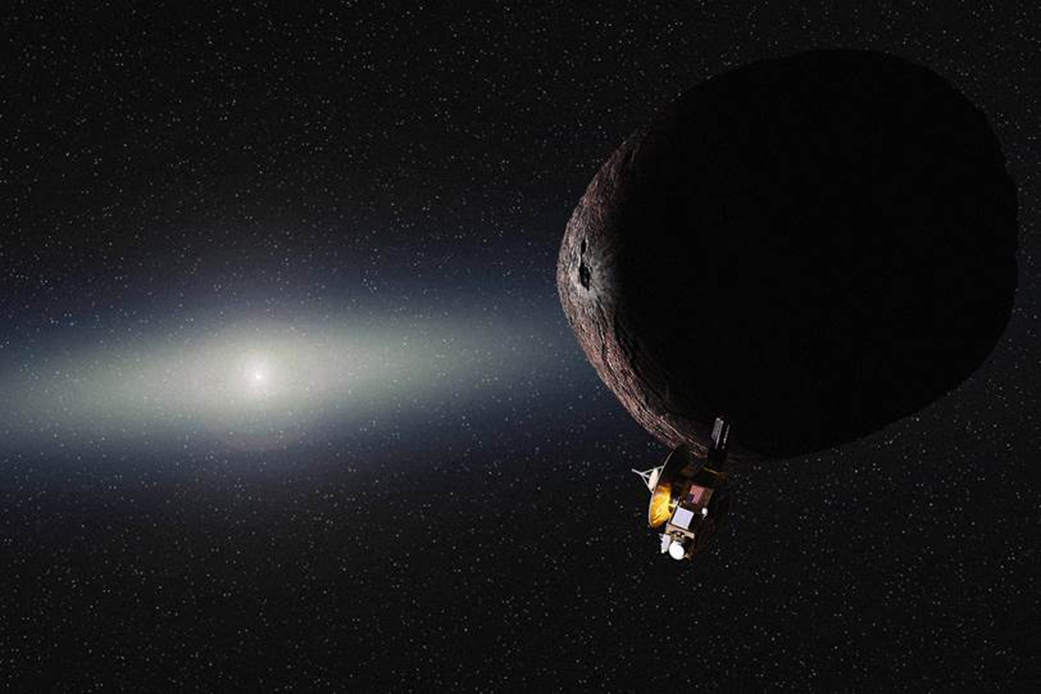It's Official! NASA Pluto Probe to Fly by Another Object in 2019

NASA's New Horizons Pluto probe isn't done exploring the far outer solar system just yet.
NASA has approved a mission extension for New Horizons, which performed the first-ever flyby of Pluto in July 2015. The spacecraft is now set for a Jan. 1, 2019 flyby of a small object called 2014 MU69, which lies about 1 billion miles (1.6 billion kilometers) beyond Pluto in the dark and frigid Kuiper Belt.
"The New Horizons mission to Pluto exceeded our expectations, and even today the data from the spacecraft continue to surprise," Jim Green, NASA’s Director of Planetary Science, said in a statement Friday (July 1). "We’re excited to continue onward into the dark depths of the outer solar system to a science target that wasn’t even discovered when the spacecraft launched." [Destination Pluto: NASA's New Horizons Mission in Pictures]
Though 2014 MU69 and Pluto occupy roughly the same realm of space, they are very different objects. For example, Pluto is 1,474 miles (2,372 km) wide, whereas 2014 MU69 is thought to be just 13 to 25 miles (21 to 40 km) across.
"This places [2014 MU69] in a key intermediate size regime to better understand planetary accretion," New Horizons principal investigator Alan Stern wrote in a blog post in April, when the New Horizons team officially submitted the mission extension proposal. "And given its 4-plus-billion-year existence in cold storage so far from the sun, MU69 will be the most pristine object ever visited by any space mission."
New Horizons should come within 1,900 miles (3,000 km) of 2014 MU69 during the 2019 flyby, Stern wrote — about four times closer than the probe got to Pluto during last year's historic encounter.
"If I do say so myself, the flyby of MU69 would be a landmark event, shattering all distance records for deep-space exploration, and yielding an impressive scientific bounty," added Stern, who's based at the Southwest Research Institute in Boulder, Colorado.
Breaking space news, the latest updates on rocket launches, skywatching events and more!
While New Horizons will keep zooming outward, NASA's Dawn spacecraft will stay put at the dwarf planet Ceres, the largest object in the asteroid belt, agency officials announced today.
Dawn's primary science mission just ended, and team members had proposed sending the probe on to study an asteroid in the belt called Adeona. But NASA nixed that idea.
“The long-term monitoring of Ceres, particularly as it gets closer to perihelion — the part of its orbit with the shortest distance to the sun — has the potential to provide more significant science discoveries than a flyby of Adeona," Green said in the same statement.
A visit to Adeona would have marked the third cosmic body studied up-close by Dawn, which also orbited the protoplanet Vesta from July 2011 through September 2012. The spacecraft has enough fuel left to keep operating at Ceres through early 2017, mission team members have said.
NASA has also approved mission extensions though fiscal year 2018 for the Mars Reconnaissance Orbiter; Mars Odyssey Orbiter; MAVEN (Mars Atmosphere and Volatile EvolutioN) orbiter; the Opportunity and Curiosity Mars rovers; and the Lunar Reconnaissance Orbiter, agency officials announced Friday. NASA has also greenlit further support for the European Space Agency’s Mars Express orbiter mission.
These decisions were based on a report by the 2016 Planetary Mission Senior Review Panel, NASA officials said. The extensions are all contingent on the availability of resources, which will be determined by budget processes.
Follow Mike Wall on Twitter @michaeldwall and Google+. Follow us @Spacedotcom, Facebook or Google+. Originally published on Space.com.

Michael Wall is a Senior Space Writer with Space.com and joined the team in 2010. He primarily covers exoplanets, spaceflight and military space, but has been known to dabble in the space art beat. His book about the search for alien life, "Out There," was published on Nov. 13, 2018. Before becoming a science writer, Michael worked as a herpetologist and wildlife biologist. He has a Ph.D. in evolutionary biology from the University of Sydney, Australia, a bachelor's degree from the University of Arizona, and a graduate certificate in science writing from the University of California, Santa Cruz. To find out what his latest project is, you can follow Michael on Twitter.
